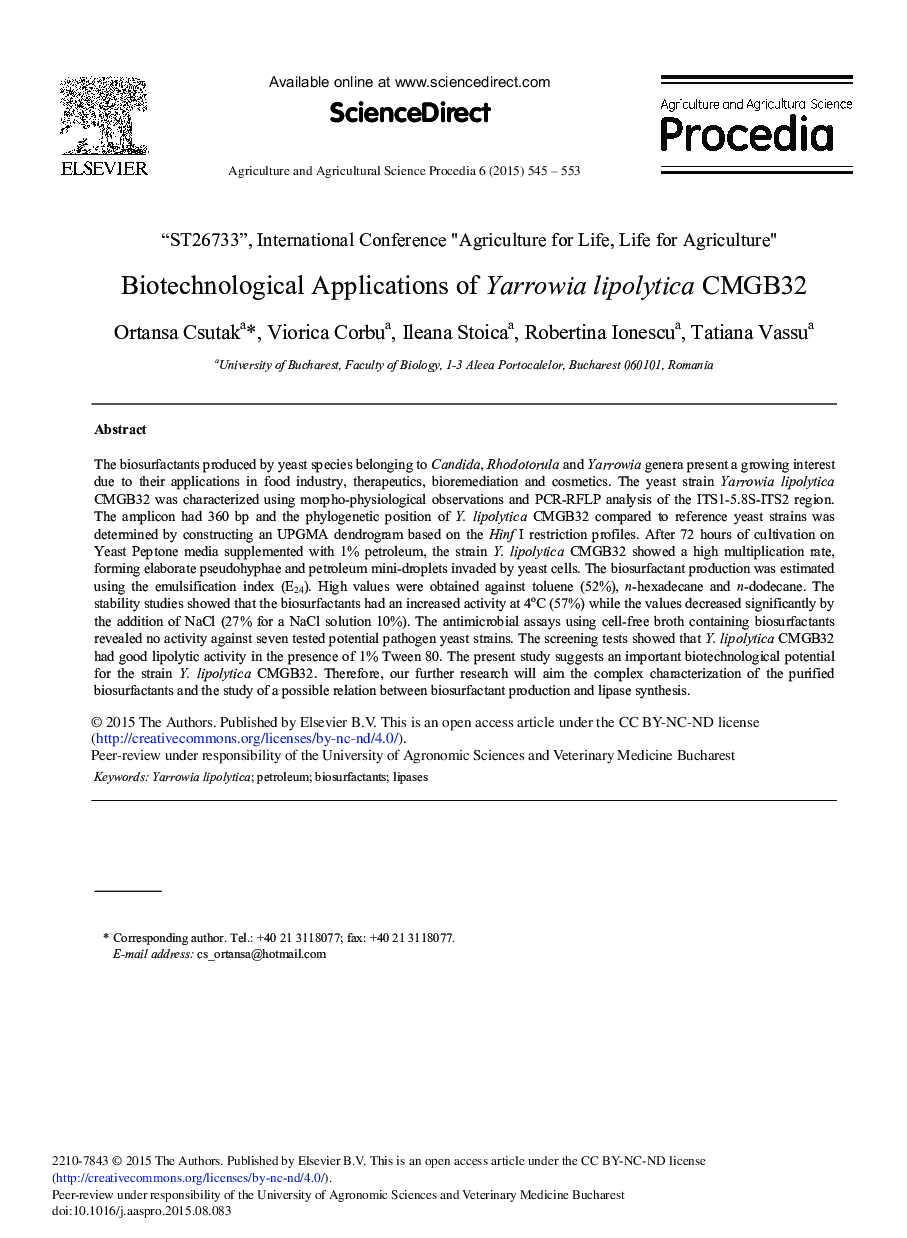| Article ID | Journal | Published Year | Pages | File Type |
|---|---|---|---|---|
| 4492479 | Agriculture and Agricultural Science Procedia | 2015 | 9 Pages |
The biosurfactants produced by yeast species belonging to Candida, Rhodotorula and Yarrowia genera present a growing interest due to their applications in food industry, therapeutics, bioremediation and cosmetics. The yeast strain Yarrowia lipolytica CMGB32 was characterized using morpho-physiological observations and PCR-RFLP analysis of the ITS1-5.8S-ITS2 region. The amplicon had 360 bp and the phylogenetic position of Y. lipolytica CMGB32 compared to reference yeast strains was determined by constructing an UPGMA dendrogram based on the Hinf I restriction profiles. After 72 hours of cultivation on Yeast Peptone media supplemented with 1% petroleum, the strain Y. lipolytica CMGB32 showed a high multiplication rate, forming elaborate pseudohyphae and petroleum mini-droplets invaded by yeast cells. The biosurfactant production was estimated using the emulsification index (E24). High values were obtained against toluene (52%), n-hexadecane and n-dodecane. The stability studies showed that the biosurfactants had an increased activity at 4oC (57%) while the values decreased significantly by the addition of NaCl (27% for a NaCl solution 10%). The antimicrobial assays using cell-free broth containing biosurfactants revealed no activity against seven tested potential pathogen yeast strains. The screening tests showed that Y. lipolytica CMGB32 had good lipolytic activity in the presence of 1% Tween 80. The present study suggests an important biotechnological potential for the strain Y. lipolytica CMGB32. Therefore, our further research will aim the complex characterization of the purified biosurfactants and the study of a possible relation between biosurfactant production and lipase synthesis.
